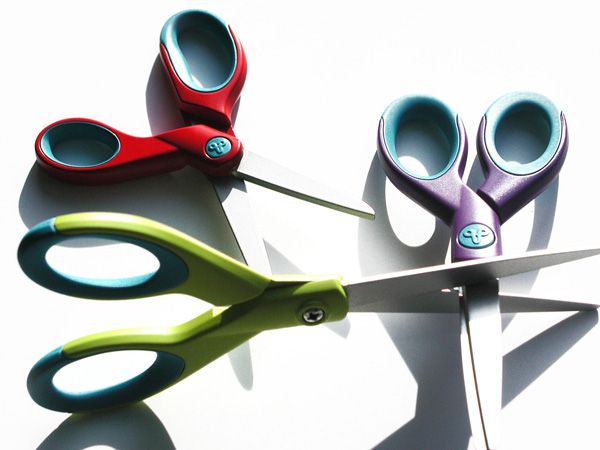Understanding Strong Materials Part 1 – Understanding Material Properties

- CAD
- car components
- density water
- designer
- Embody 3D
- extreme sports equipment
- impact energy
- industrial design
- Industrial Designer
- manufacturing
- manufacturing technicalities
- Martin Gibson
- material
- metal frames
- plastics
- product strength
- strength
- strength components
- Strength Fatigue
- stress
- tensile
- understanding
- water resistance
In this first part of the article series ‘Understanding Strong Materials’ we will explore the properties of material strength. In material science the strength of a material is characterised by its ability to withstand an applied stress without failure or breakage. It is imperative as an industrial designer to get the most out of the materials you utilise day to day. The next part of this series will be a bit more practical and entertaining so stay tuned for that on Wednesday! Please comment!
Article by Martin Gibson – Twitter – 27.02.2010
When selecting the optimal material for your product, strength may not be a high priority, and for many products this isn’t a problem. In the 21st century it is incredibly easy to make any product sufficiently strong, but to make a product as light as possible and to use the minimum amount of materials, this is when it becomes a real design challenge. As I have said in a previous post ‘User Interface and Products’ the future of design is in the interface and the user experience, to deliver a product that is not satisfactorily durable is almost a industrial design crime. In conjunction with durability other factors need to be considered like aesthetics (texture, finish etc.), cost, batch size, manufacturing and fabrication limitations and possibilities, and the list goes on. Below I am going to go into the strength properties associated with materials, but also depending on your products context other non strength components may be equally relevant including: density, water resistance, flammability, elasticity etc.
It could be said that the the stronger the material the more it weighs, but this is not always true, but it is a relatively reliable rule of thumb. A material’s strength is dependent on its microstructure (which is different from the grain of the material). The manufacturing and fabrication processes to which a material is subjected to can alter its microstructure. Not to mention there are a variety of techniques including solid solution strengthening, precipitation hardening and grain boundary that can strengthen a material considerably pre-production. There are two important terms you will hear frequently when it comes to strength: ultimate and yield. Ultimate strength refers to the maximum stress a material can withstand before rupture. Yield strength is the minimum amount of stress a material can withstand before it is permanently deformed and can’t be reversed upon removal of the force.
Understanding Material Stress
Compressive Stress
Compressive stress is the stress caused by a load that aims to reduce the length of a material, i.e. squeezing the material. This stress must have two forces applied to it, a pressure force and a reactive force. So it is like a drill bit entering a piece of material as a downward force, but the material has a reactive force being the support plate which is causing the material to compress.
 An example of compressive stress acting from the table top compressing the stand into the floor. The compression in this example is almost trivial in that the stand could seamlessly carry the table top or even 20-30 table tops for that matter.
An example of compressive stress acting from the table top compressing the stand into the floor. The compression in this example is almost trivial in that the stand could seamlessly carry the table top or even 20-30 table tops for that matter.
Tensile Stress
Tensile stress is the opposite to compressive stress as it is a stress causing the material to elongate. For example a chain that is holding up a batch of materials from a crane, there would be a tensile stress causing the chain links to stretch.
 This is a humorous example of what a Mini would look like after tensile stress has been applied to the front and the back of the vehicle.
This is a humorous example of what a Mini would look like after tensile stress has been applied to the front and the back of the vehicle.
Shear Stress
Unlike the other stress types where the force is coming perpendicularly, shear stress is when the stress is coming parallel to the object from both directions causing the object to twist or topple. Imagine there is someone standing on your right hand side trying to push you over sideways, and then there is another person kneeling down on your left trying to push you over from your feet, this would be a classic example of shear stress in your abdominal/lower back area.
 In agriculture this is how we get the name shears as the scissor like action is applying shear stress to the object, that is, stress applied in opposing directions from the two blades.
In agriculture this is how we get the name shears as the scissor like action is applying shear stress to the object, that is, stress applied in opposing directions from the two blades.
Understanding Material Strength
Yield Strength
Yield strength is the lowest stress that gives permanent deformation to a material once the load is removed. In product design yield strength should always be your strength benchmark as it is normally never satisfactory to deliver a product that can warp or deform from standard use scenarios. It would be like selling a baseball bat which over time bends from over-use which would obviously receive a critical market reception.
Compressive Strength
Compressive strength is the maximum amount of compression required before the material fails whether it be through brittle failure or crack propagation.
Tensile Strength
Tensile strength is the maximum amount of elongation required before the material fails whether it be in a ductile manner or through brittle failure.
Fatigue Strength
Fatigue strength is often difficult to calculate but it is the materials ability to withstand these types of forces through cyclic loading. Particularly when it comes to material testing on prototypes you have to be extremely careful of this strength property. Because your product might be able to withstand multiple impacts of 5kg loads, but perhaps when your product is subjected to that same load for 3 months constantly the material might rupture. Consumers often refer to this phenomena as ‘wear and tear’ we all have products at home that seem to deform after a few years of general use.
Impact Strength
Impact strength is the ability of a material to withstand loads applied suddenly. This is measured by the impact energy required to fracture the material. This type of property might be valuable when testing extreme sports equipment or car components.
Understanding Material Strain
Deformation
Is simply the change of geometry of the material caused when a stress is applied, this is measured by the displacement of the material.
Strain
Is the term given to the rate of change of deformation. For example if the deformation of a material accelerates as a material is just about to rupture, it could be said that the strain on the material is increasing.
Deflection
Is the magnitude in which a material wants to bend under a load, this strain analysis is particularly relevant when designing metal frames.
Complexity and Overlap of Material Properties
Identifying, analysing and comprehending these material terms in your products is no easy task. As often several phenomenon might be taking place simultaneously. For example a counter-levered beam supporting a shelf is undergoing a tensile stress at the top of the beam, a compressive stress at the bottom of the beam and is constantly under the state of deflection! Which is quite a mouthful. It is paramount to identify what types of stresses and strains are taking place in your products as weak areas can be bolstered, and strong areas can be reduced to save material. It is also important to note the result of forces on your product. Are the forces causing your material to experience elasticity or plasticity? (Elasticity being the ability for your material to return to its previous shape and plasticity is when a material is permanently deformed.
Finding/Understanding Material Specifications
It is often the engineers job to identify and study these material properties in detail. But there are some designers who would be considered ‘industrial design engineers’ where they hold total responsibility of the manufacturing technicalities of their products. But whatever the case every industrial designer doesn’t have to know the intricacies of material strength, but rather a designer should carry a broad knowledge of perhaps what material categories act in certain ways. For example you may not need to know that steel has a stronger tensile strength than aluminium, but rather know that metals tend to have stronger tensile strength than plastic. Or understand that ceramics are likely to shatter on impact, plastics tend to experience plasticity whereas some woods may experience elasticity.
I highly recommend the website MatWeb which has incredible detail on every material you can think about. It states all the properties I have mentioned above for free, and for premium members you can even download plugins to popular CAD programs with this data.


6 Comments
You made all that physics boringness interesting and relevant for designers.
look forward to wednesday’s article
awesomeness
that’s why they call them shears! I thought it was a coincidence!
Вас посетила просто великолепная мысль…
In this first part of the article series ‘Understanding Strong Materials’ we will explore the properties of material strength…..
[…] obsolescence like a toaster for example. Utilising stronger materials, more durable fasteners and designing stronger geometric forms are great ways to do this. Industrial designers must analyse the limiting factor of a designs […]